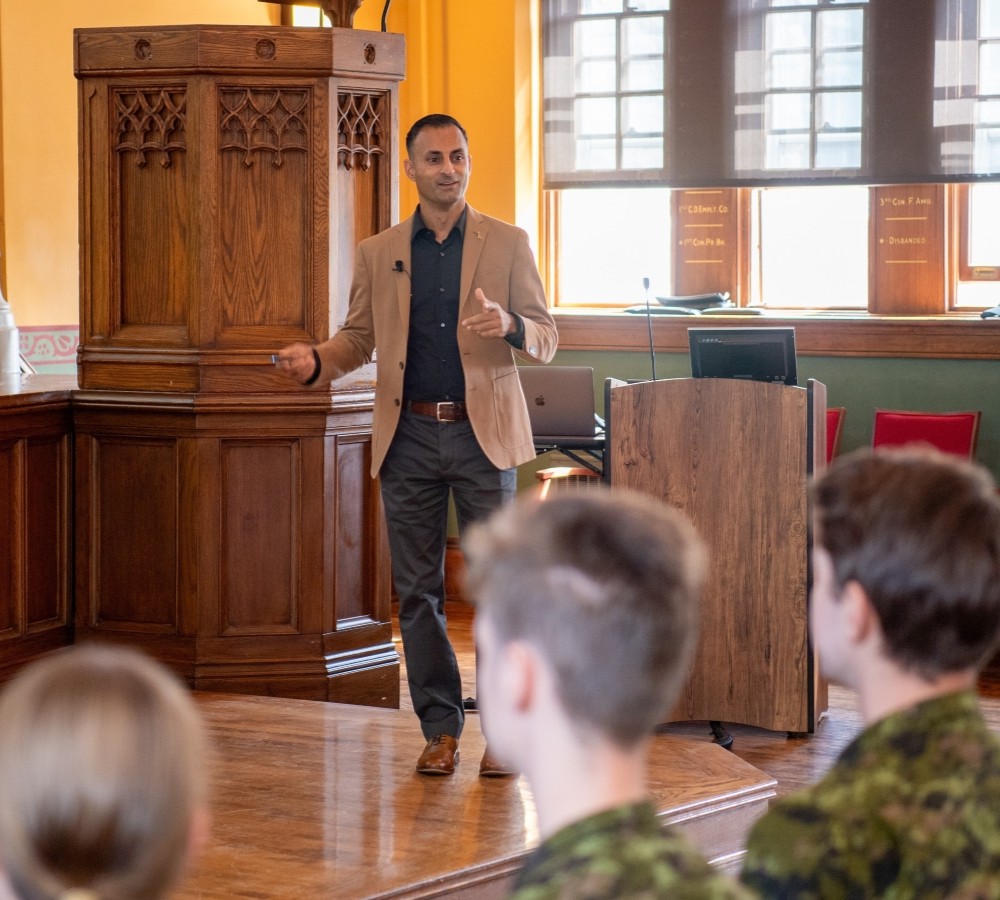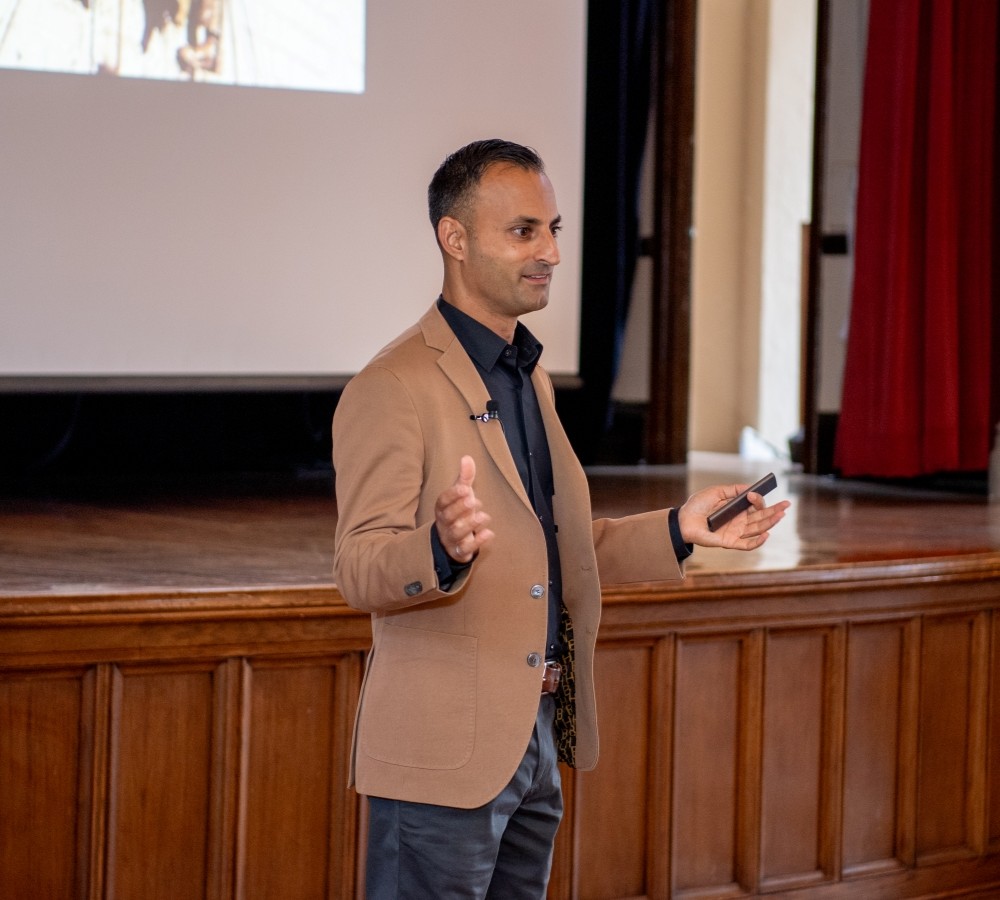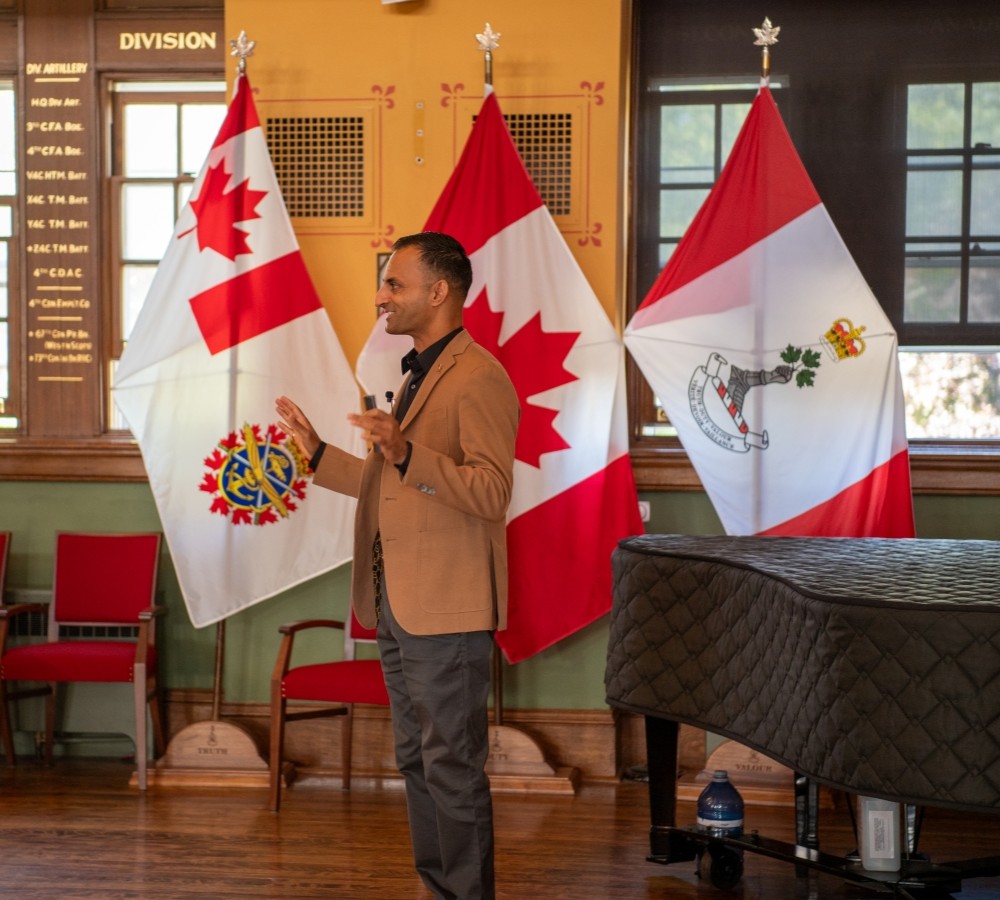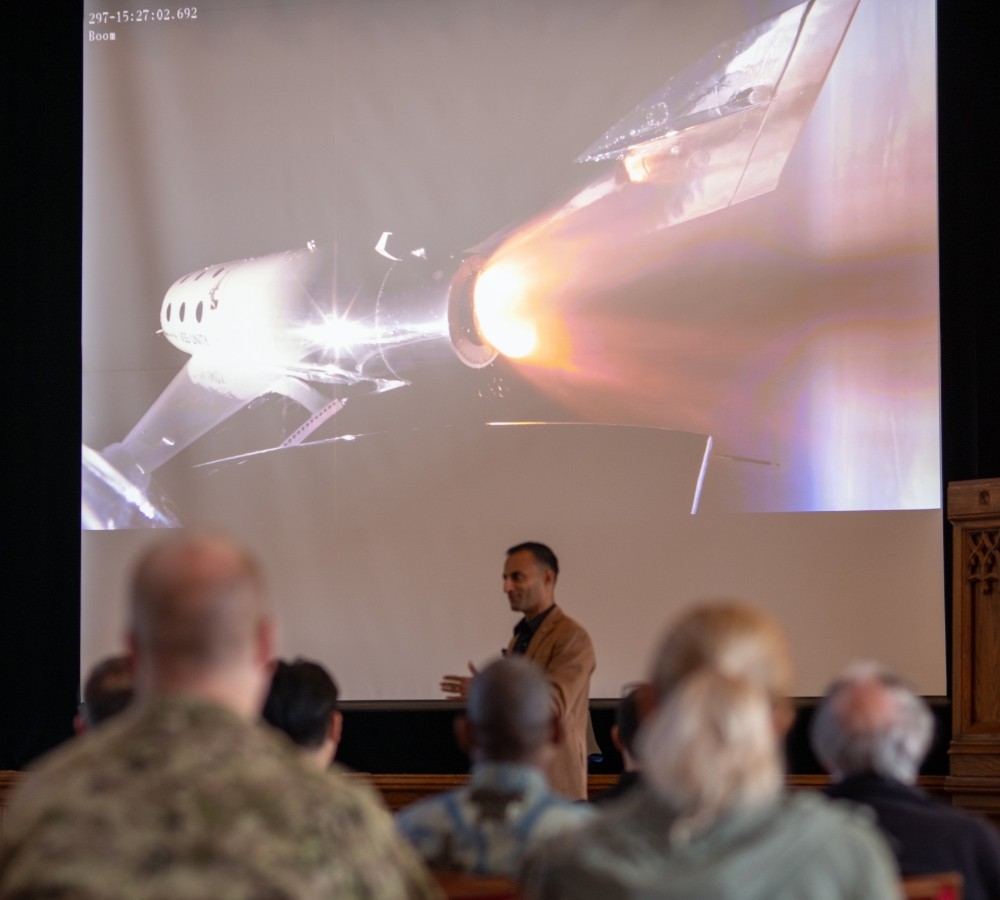The Canadian Space Agency (CSA) and NASA have announced the crew of the Artemis II mission, the first group of astronauts to return to the moon since 1972.
RMC Physics and Space Science graduate, Jeremy Hansen will be a mission specialist!
He will become the first Canadian to journey to the Moon.
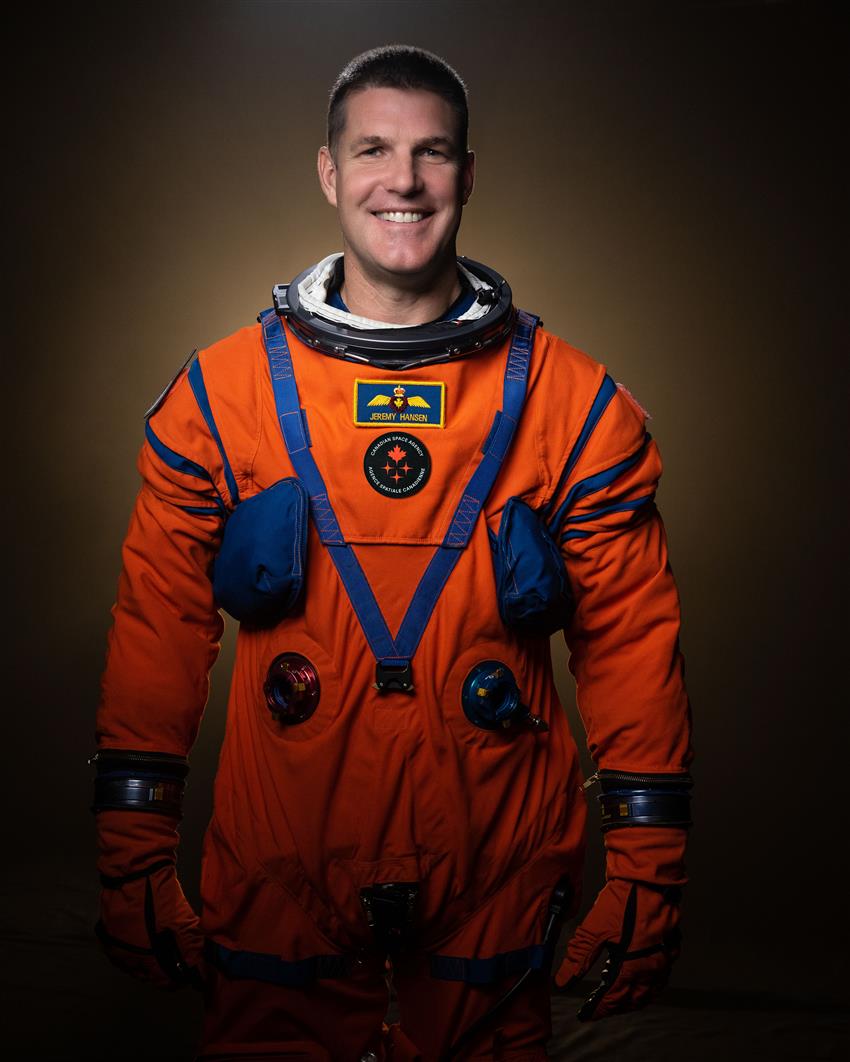
Col. Jeremy Hansen (Image credit: Canadian Space Agency)
Colonel Hansen began his his post-secondary education as an Officer Cadet at the Royal Military College Saint-Jean in Saint-Jean-sur-Richelieu, Quebec, and completed his undergraduate degree at the Royal Military College of Canada in Kingston, Ontario.
Col Hansen graduated with a bachelor's degree in honours space science (BScHons) from RMC in 1999.
He also earned a Master of Science (MSc) in physics from RMC in 2000, with a research focus on Wide Field of View Satellite Tracking.

Then LCol Jeremy Hansen in 2016, speaking in Historic Currie Hall at the Royal Military College of Canada (RMC), during an event marking the 25th Anniversary of the granting of space science degrees by RMC. (Image credit: Bryce Bennett)
Statement by Dr. Ribal Georges Sabat, Vice-Principal Academic and Professor of Physics at RMC:
The Royal Military College of Canada is extremely proud of ex-cadet Col. Jeremy Hansen for being selected to be a mission specialist for the Artemis II NASA mission, currently scheduled to orbit the moon in November 2024
This will be the first lunar mission by NASA in 50 years and Col. Hansen is set to become the first Canadian in history to reach deep space.
Col. Hansen will also become the first Canadian to journey to the Moon. He obtained his Bachelor of Science from RMC in 1999, specializing in Honours Space Science. He also obtained a Master of Science in Physics froe RMC in 2000. His Master’s thesis was titled “Wide Field of View Satellite Tracking” and it was supervised by Dr. Erwin Batalla, now retired professor from the Department of Physics and Space Science at RMC.
RMC has a long history of training outstanding leaders for the Canadian Armed Forces, and subsequently for the Canadian society for over 147 years.
The sheer number of prominent and accomplished RMC ex-cadets in society today is quite remarkable considering the low number of overall students who attended RMC, when compared to other Canadian universities. This is testament to the quality of education provided by RMC which is based on a 4-pillar program that includes academics, military leadership, second language training and athletics.
The Department of Physics and Space Science is one of the oldest departments at the College. The Space Science program at RMC is one of the very few university programs in Canada that provides specialized training in space-related physics, including orbital mechanics, space mission design and analysis, as well as satellite tracking, remote sensing and communications. The Department of Physics and Space Science is equipped with state-of-the-art equipment for satellite tracking and observation and our professors are world-renown researchers in the space science domain.
It is a great honour for RMC, and particularly the Department of Physics and Space Science, to have one of our graduates be selected for such an amazing historical event.
Col Joshua Kutryk, RMC Class of 2004, is currently an active astronaut, while Capt(N) (Ret) Marc Garneau, Class of 1970, and Col (Ret) Chris Hadfield, Class of 1982 are former astronauts.
More information about Colonel Hansen can be found at the Canadian Space Agency.
General information about the Department of Physics and Space Science at the Royal Military College of Canada can be found here.
More information about Graduate Studies in Space Science at the Royal Military College of Canada can be found here.
For more information about the Artemis program, visit the CSA's Artemis program webpages.
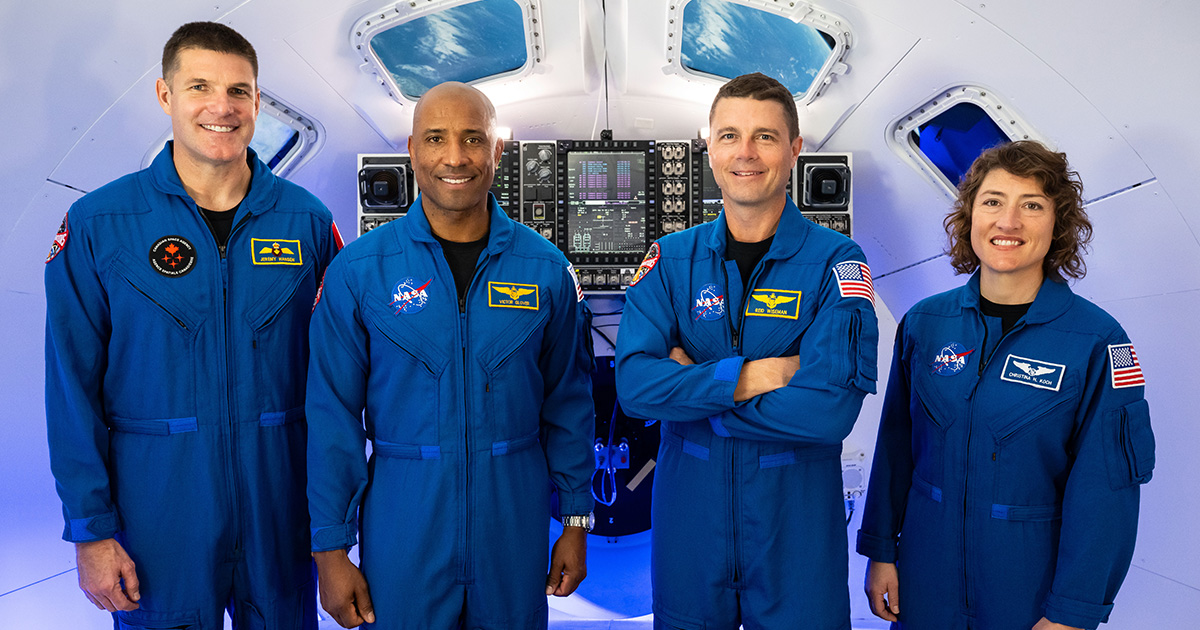
Canadian Space Agency (CSA) astronaut Jeremy Hansen (left) stands inside a model of the Orion spacecraft with his Artemis II crewmates: (left to right) NASA astronauts Victor Glover, Reid Wiseman, and Christina Hammock Koch. (Credit: James Blair/NASA)
